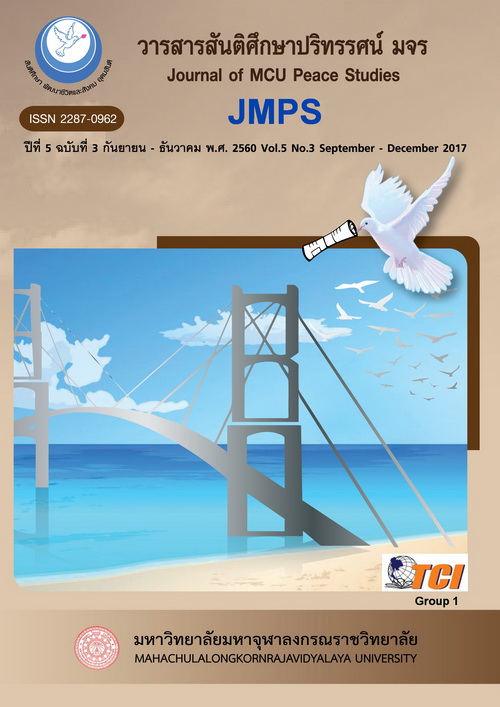Buddhism and Trauma Healing
Main Article Content
บทคัดย่อ
This article is aims to study the way Buddhist principles integrated with the technique of modern mental health care although the rise of trauma are caused from outsiders or other persons. The occurrence of Trauma whether it is caused by external threats or by others, inevitably affects the mental health of the victims. The level of the response to a traumatic event varies on person to person, and can range from anxiety, depression, Self-physical assault and suicide. This is something that everyone wishes to avoid and prevent. These people are being helped in a timely manner, with the current research and medical knowledge being progressive and incontinuous development. Integrated therapeutic approaches have begun to play a greater role in rehabilitation work of mental health including the application of Buddhist principles to help treat people with mental wounds from the loss of internal body organs, assets, or loved ones. The way to apply Buddhism together with the principles of psychiatric treatment has been implemented in many projects both in and outside the country with satisfactory response. The heart of Dharma in healing trauma is to emphasize the patient's understanding of the nature of life; the change of life cycle that everyone has to face and to be realistic on seeing the world and look for the advent of suffering. The consideration of suffering by using sati is the wisest method to find a way to end suffering and promote self-mindfulness. This is in order for the patient or therapist to have the right understanding that will lead to a strong mindset, and allow them to be able to live with the truth, attain the knowledge, manage and live with the losses that can occur.
Article Details
ทัศนะและความคิดเห็นที่ปรากฏในบทความในวารสาร ถือเป็นความรับผิดชอบของผู้เขียนบทความนั้น และไม่ถือเป็นทัศนะและความรับผิดชอบของกองบรรณาธิการ ยินยอมว่าบทความเป็นลิขสิทธิ์ของวารสาร


